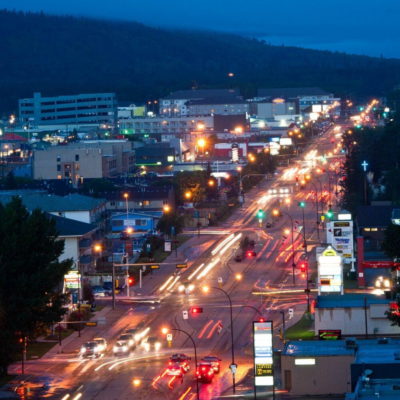Amid a global pandemic, Fort McMurray faced evacuation orders when a freak flood hit the community hard. It still wasn’t enough to stop the Built for Zero Canada community from achieving chronic and veteran homelessness By-Name Lists and Reaching Home quality Coordinated Access. This blog is a part of our Bright Spot series highlighting outstanding work in ending homelessness happening across Canada.

A ‘one-in-100 year’ natural disaster on top of a health crisis didn’t stop Fort McMurray from reducing chronic homelessness. In the last month, the Alberta community not only became the second in Canada to achieve a Veteran Quality By-Name List (BNL), but they also confirmed a Quality BNL for chronic homelessness, and a Reaching Home quality Coordinated Access system.
This year has thrown countless curveballs at people experiencing homelessness and the service providers working to connect them to housing—but few have quite felt the impact of 2020 like the city of Fort McMurray. Not long after the pandemic was declared in March, the Built for Zero Canada community in northern Alberta was hit by a major flood requiring an evacuation order on April 28.
Fort McMurray was able to reduce their chronic homeless population, from 41 in May to 29 in June, because over the last five months the team learned how to better collaborate, work together, and share information. Since March 1, 75 individuals have been referred to a Housing First or Rapid Re-Housing program to receive permanent housing.
“Achieving the goals our team has, in the middle of a global pandemic and community flood, is a testament to our region’s commitment to supporting the chronic homelessness population,” says Deanne Bergey, Director of Community and Protective Services. “I would like to thank and congratulate our dedicated staff and community organizations for ensuring the safety and well-being of our most vulnerable population as our region simultaneously experienced two state of emergencies.”
Though the focus is always reducing chronic homelessness in Fort McMurray, it intensified during the pandemic to reduce community spread of COVID-19 within the homeless population and during the flood. It was a priority to locate individuals to ensure they were safe and had evacuated.
Responding to COVID-19 and a major flood
In early March, all Regional Municipality of Wood Buffalo (RMWB) Community Plan on Homelessness (CPH) staff and all CPH-funded agencies began working remotely. Although the way the programs were offered changed slightly, the services and support were still available and accessible wherever possible.
On March 28, an isolation centre was setup for symptomatic individuals who presented at the Salvation Army Shelter or any agencies who provide direct services to individuals experiencing homelessness. From opening to April 27, a total of 12 individuals used the centre and tested negative for the virus.
On April 28, clients were evacuated from the centre to various locations when the flood hit. The RMWB worked with agencies to locate and provide support for 62 Housing First, Rapid Re-Housing, and Outreach program participants who were living in the downtown core.
Twenty-eight people were evacuated to emergency camps, 12 stayed in shelter, and 5 stayed with friends or family, and the rest in various other spots.
Due to COVID-19, program participants were already set up with phones and minutes in order to receive virtual case management, which made it easier to connect and make sure people were safe. During the flood, funded agencies and municipal staff delivered any immediate needs, such as medication and phone minutes, to evacuation sites.
Also, RMWB staff supported those efforts by locating and arranging emergency responses to pick up those stranded in flood zones.
Pieces falling into place
Thanks to increased community collaboration during COVID-19 and the flood, the access points and Centralized Intake were able to locate and connect with individuals on the BNL, which meant they were able to identify who still needed housing supports. The BNL was also updated to prioritize individuals at higher risk of developing complications from COVID-19, which allowed agencies to house those individuals first and assist them with a place to self-isolate.
The development of the Diversion Program was the silver lining in the middle of the pandemic and flood, as the program was realized due to the expected increase in shelter/isolation centre usage and Federal COVID-19 Emergency Response funding. This program supports those first accessing homelessness response services to find safe and appropriate housing alternatives.
Since it started with a health crisis, that meant the homelessness sector had to work closely with Alberta Health Services (AHS). These partnerships led to more buy in from other areas of AHS and an elevated desire to work directly with various levels of access points and health service providers.
Achieving Quality BNLs for chronic and veteran homelessness and a Reaching Home Coordinated Access all came together for Fort McMurray when the system started operating as it’s meant to, and a fulsome community effort was at the table. These achievements were greatly due to front-line staff and Coordinated Access Team working fluidly during both COVID-19 and the flood.
Now with a possible second wave ahead, Fort McMurray has plans in place for community isolation, but this time will have the benefit of all the incredible work they’ve done so far in 2020.
Check out Fort McMurray’s Coordinated Access guide by clicking here.
This blog is a part of our Bright Spot series highlighting outstanding work in ending homelessness happening across Canada.
